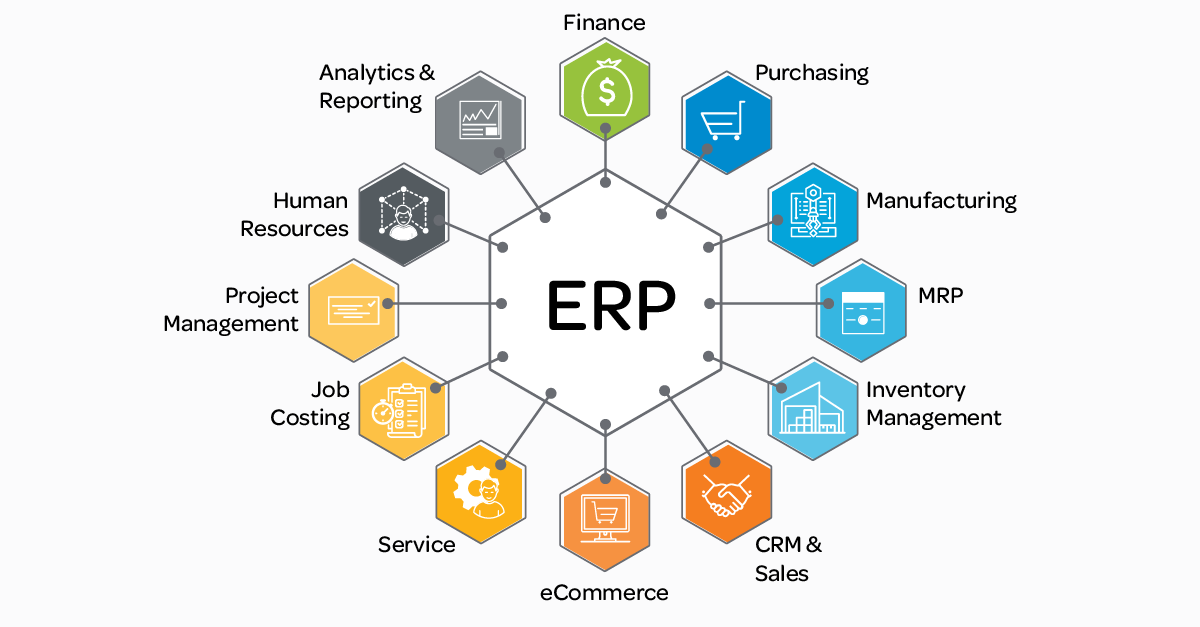When running a small or medium-sized business (SMB) in Australia, managing operations efficiently can mean the difference between thriving and merely surviving. One of the tools that can make all the difference is an Enterprise Resource Planning (ERP) system. It can streamline processes, from inventory management to human resources, helping you keep an eye on the bigger picture while efficiently handling day-to-day operations.
But when it comes to choosing the right ERP system for your SMB, the question quickly arises: Should you go for a free or paid option? Let’s explore the key differences, advantages, and challenges of both options to help you make the best decision for your business.
What is an ERP System?
An ERP system integrates various business functions into one software suite. Rather than using separate tools for accounting, sales, human resources, and supply chain management, an ERP connects all these aspects to give you a unified view. This improves communication, cuts down on errors, and enhances decision-making by delivering real-time data across your company.
For SMBs in Australia, ERP systems can be a game-changer, especially as they scale operations and need to ensure everything runs smoothly.
Free ERP Systems: What’s on Offer?
Many free ERP systems cater to smaller businesses with limited budgets. However, free doesn’t always mean completely without cost. Here are some important aspects of free ERP systems:
Key Advantages of Free ERP Systems:
- Low Upfront Investment
Free ERP systems are attractive for startups or businesses with tight financial constraints. There are no licensing fees, so they allow you to implement basic functionality without breaking the bank. - Open Source Flexibility
Many free ERP solutions, like Odoo Community Edition or ERPNext, are open source. This means that if you have the technical know-how, you can customize them to suit your exact business needs. They provide an incredible amount of flexibility, especially for businesses looking to innovate. - No Vendor Lock-In
Free ERP systems allow you to remain independent. Since the source code is available, you’re not tied to a specific vendor for updates or support, which can lead to long-term savings.
Key Disadvantages of Free ERP Systems:
- Limited Features and Scalability
Free versions of ERP systems often come with restricted features. For example, Odoo and Dolibarr offer free options, but advanced features like customer relationship management (CRM) and advanced reporting are locked behind a paywall. - Technical Expertise Required
Open-source ERP systems often require a level of IT knowledge for installation, customization, and maintenance. SMBs without a dedicated IT team might struggle to maintain the system, leading to potential downtime and frustration. - Lack of Support
Free systems typically come with limited or community-based support. If something breaks or doesn’t function as expected, you may be left relying on forums, which can be slow to provide solutions compared to the immediate, professional support offered with paid ERP systems. - Hidden Costs
While the system might be free, you could end up spending on third-party developers, consultants, and additional software integrations to get everything functioning correctly.
Paid ERP Systems: Is the Investment Worth It?
Paid ERP systems are generally more comprehensive, feature-rich, and scalable, but they come with a price tag. Here’s why some businesses opt for paid solutions:
Key Advantages of Paid ERP Systems:
- All-Inclusive Features
Paid ERP systems like SAP Business One, NetSuite, or MYOB Advanced come with all the bells and whistles out of the box. Whether you need robust inventory management, multi-currency support, or predictive analytics, paid ERP systems have these tools baked in. - Professional Support and Updates
Paid ERP providers offer dedicated support teams who are just a phone call or email away. You also receive regular updates and security patches, ensuring that your system stays secure and compliant with regulations like the Australian Consumer Law (ACL) or the General Data Protection Regulation (GDPR). - Scalability
Paid ERPs are designed to grow your business. Whether you’re a small team today but plan to expand to new regions or add additional business functions in the future, paid systems are built to scale seamlessly. - User-Friendly and Intuitive
Paid ERP systems generally focus on user experience, providing intuitive interfaces that require less training. Time saved on training means more time dedicated to running your business.
Key Disadvantages of Paid ERP Systems:
- High Initial and Recurring Costs
Implementing a paid ERP system can be expensive, with high upfront costs for licensing, training, and setup. On top of that, most paid ERPs follow a subscription-based model, meaning there are recurring fees to factor into your budget. - Potential for Vendor Lock-In
With a paid ERP, you’re at the mercy of the vendor. If they increase prices or discontinue services, your options might be limited without migrating to a completely different system, which can be costly and time-consuming. - Complex Implementations
Even though paid ERP systems are usually more user-friendly, the implementation process can still be complex, especially for SMBs transitioning from manual or legacy systems. It might require hiring external consultants to ensure a smooth deployment.
Factors to Consider When Choosing Between Free and Paid ERP Systems
Before making a decision, it’s essential to weigh several critical factors based on your business needs, size, and long-term goals.
- Budget
If your business is in the early stages and you’re operating on a shoestring budget, a free ERP may seem tempting. But don’t forget to account for hidden costs, including IT support and potential downtime. Paid systems, while expensive, can often pay for themselves by saving time and improving efficiency over the long run. - Business Complexity
If your business has relatively straightforward operations, a free ERP system might suffice. However, if you deal with complex processes—like multi-warehouse management, supply chain intricacies, or international compliance—a paid solution may offer the features you need right out of the box. - Growth Plans
Are you planning to grow rapidly? Paid ERP systems are often better equipped to handle scale. Free options can be limiting in this regard, requiring either a switch or heavy customization to support business expansion. - Technical Support Needs
Do you have an in-house IT team that can manage an ERP, or will you rely on external support? Paid ERPs offer professional help, while free systems often require more hands-on management, with fewer guarantees in case something goes wrong.
Unlock the full potential of your business with custom ERP solutions tailored for growth. MetricsERP offers the best ERP for Small and Medium Businesses in Australia. Contact us today for a free consultation!
Conclusion: Which is Right for Your SMB?
Ultimately, the decision between free and paid ERP systems comes down to the unique needs of your business. Free ERPs can be a perfect starting point for small Australian businesses that are tech-savvy and have simple needs. However, if your business is growing or your operations are complex, a paid ERP system may provide robust tools, support, and scalability to keep your operations running smoothly over the long haul.
Remember, choosing the right ERP system is an investment in your company’s future. Whether you opt for free or paid, ensure the system you choose aligns with your long-term business goals and operational needs.